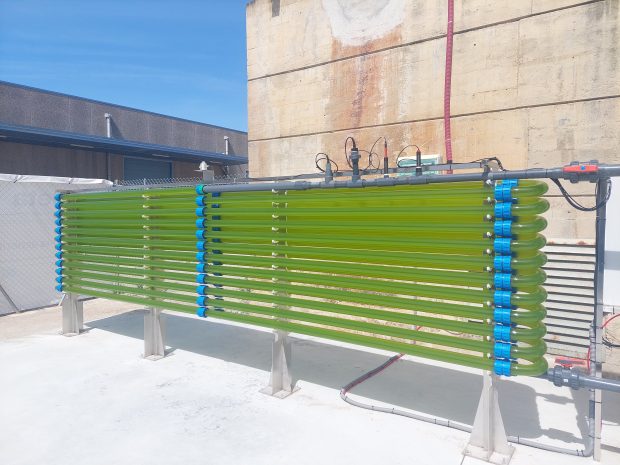CT BETA incorporates a photobioreactor for research with microalgae
In the context of the SEMPRE-BIO project, CT BETA is evaluating different options to valorise CO2 as a by-product of biogas, through the production of alternative protein from the cultivation of microalgae in a photobioreactor.

The SEMPRE-BIO project evaluates novel and cost-effective technologies for producing biomethane, a fuel gas obtained from biogas. Biogas is mainly composed of methane (CH4) and carbon dioxide (CO2). CT BETA is investigating how to valorise the CO2 recovered from biogas, so Dr. Lídia Paredes’ team is working on different strategies for its valorisation within the project. One of the lines of research is to demonstrate the technical feasibility of producing microalgae grown in a photobioreactor as an alternative source of protein. The aim is to obtain microalgae with a high percentage of protein and an amino acid profile that allows them to be used for the production of animal feed and thus contribute to the circular economy.
For the growth of these microalgae, a digestate is also used as a source of nutrients (nitrogen and phosphorus). This is a liquid by-product obtained during the treatment of organic waste by anaerobic digestion (in the absence of oxygen). Digestate is considered an organic fertiliser, as its main function is to supply nutrients to crops. In areas declared as vulnerable to nitrates it is important to look for options for the treatment of this by-product.
In the laboratory
The research work started in the laboratory, on a small scale (0.5 litres) up to 60 litres. Different experiments were carried out with three different strains of microalgae (Parachlorella kessleri, Tetradesmus obliquus and Chlorella vulgaris) and three types of digestate. The microalgae are separated from the treated water by centrifugation and the protein percentage and amino acid profile of the microalgae biomass obtained are analysed.
In the photobioreactor
After the laboratory studies, the process has been scaled up to a photobioreactor implemented on a pilot scale at the BETA TC facilities. This is a 600-litre unit with a useful volume, a tubular configuration and transparent glass to favour the capture of light and the growth of the microalgae.
“The next step will be to use the digestate as a culture medium and evaluate the production of microalgae and their protein content and amino acid profile. Finally, it will be determined whether the biomass obtained can be a valuable product for companies producing animal feed,” says Dr Paredes.
“In addition, it would reduce the high environmental impact associated with importing soya as a raw material to produce animal feed, mainly from South America and Asia,” she adds.
The incorporation of this type of equipment promotes research and progress towards a circular economy, which allows waste and by-products to be revalued, thus reducing environmental impact.
